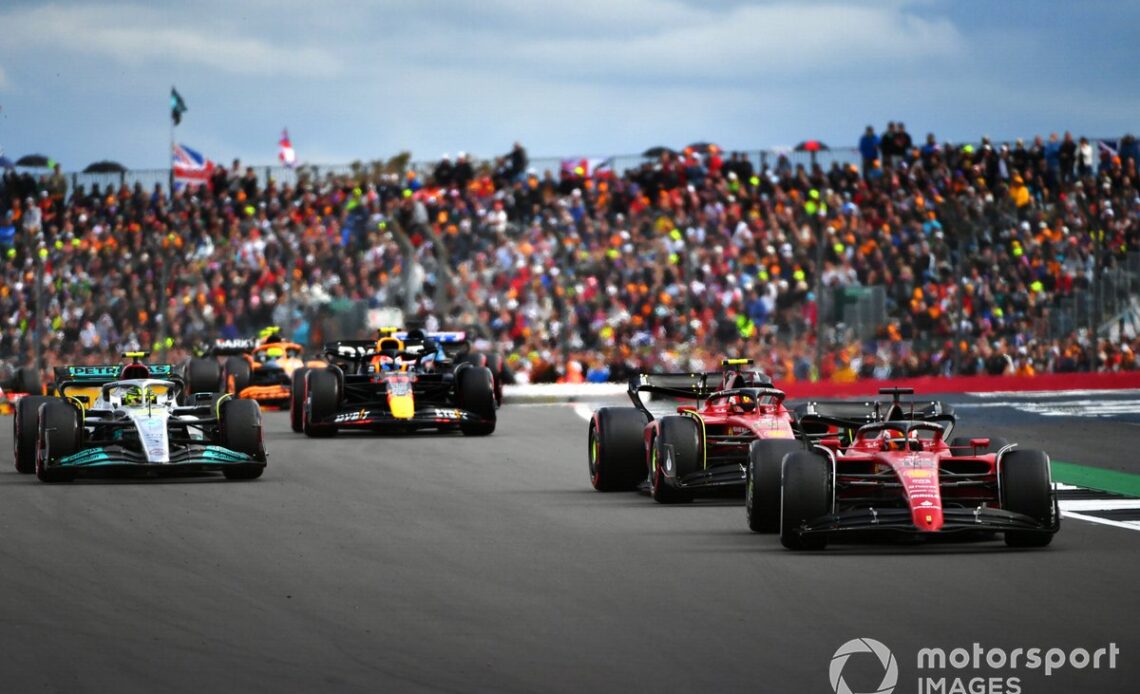Indeed, a lot of observers were left scratching their heads at some pretty aggressive attack and defence moves, and especially moments where drivers appeared to have been squeezed off the track.
There were several examples throughout the afternoon of drivers being on the outside of their rivals but finding themselves left with no room on the exit.
Mick Schumacher was forced wide by Max Verstappen on the exit of Brooklands as he tried to go around the outside of the world champion in their end-of-race battle.
It was near identical circumstances on the first lap of the official restart, as Charles Leclerc tried to pull a similar overtake on Verstappen and found himself left with no room, so had to lift off.
A few laps before the Verstappen/Schumacher incident, Lewis Hamilton had come off worse and run out side as Red Bull rival Sergio Perez dived for the inside at Village and claimed the full width of the track on the exit of the corner in their fight for second.
At the same corner on the opening lap of the original start, moments before the red flag was brought out, Hamilton had done the same to Leclerc, forcing his Ferrari driver to head across the kerbs to avoid a collision.
All of these incidents were enough to prompt debate and all apart from the Hamilton/Leclerc moment (most likely due to the red flag) were ‘noted’ by the stewards for a look at before deciding that no further action was necessary.
Charles Leclerc, Ferrari F1-75, Carlos Sainz, Ferrari F1-75, Lewis Hamilton, Mercedes W13, Sergio Perez, Red Bull Racing RB18
Photo by: James Sutton / Motorsport Images
The leniency has prompted a fair deal of intrigue, especially as there has long been an acceptance that in battles there is an onus on leaving racing room for rivals.
Indeed, the FIA’s own International Sporting Code states: “Manoeuvers liable to hinder other drivers, such as deliberate crowding of a car beyond the edge of the track or any other abnormal change of direction, are strictly prohibited. Pushing or other contact resulting in a lasting advantage is strictly prohibited. Any driver who appears guilty of any of the above offences will be reported to the Stewards.”
However, the ISC alone has never quite been enough to cover all the circumstances of F1 and, at the start of this year, F1’s race director Niels Wittich offered some clarity on the matter to teams and drivers about what is and is not allowed.
And the key factor for judging the rights and wrongs of cars having the…
Click Here to Read the Full Original Article at Motorsport.com – Formula 1 – Stories…

